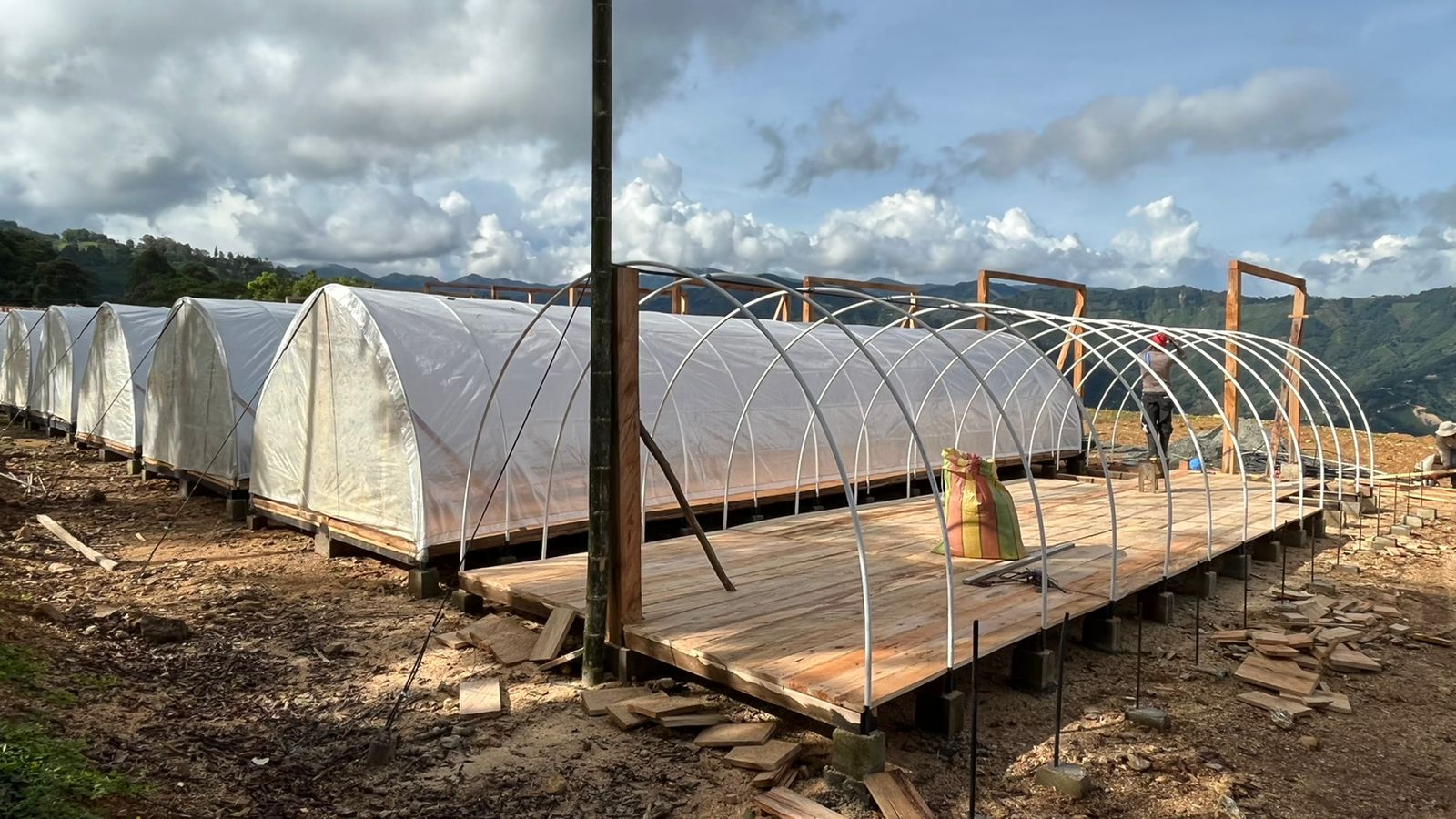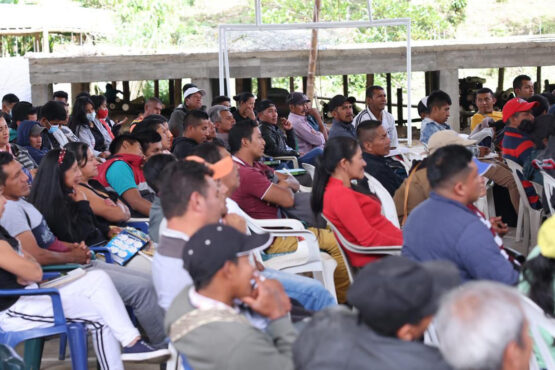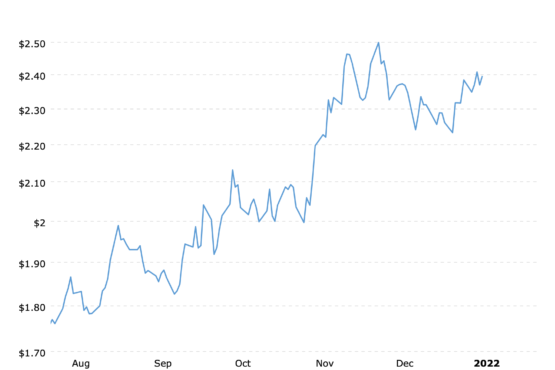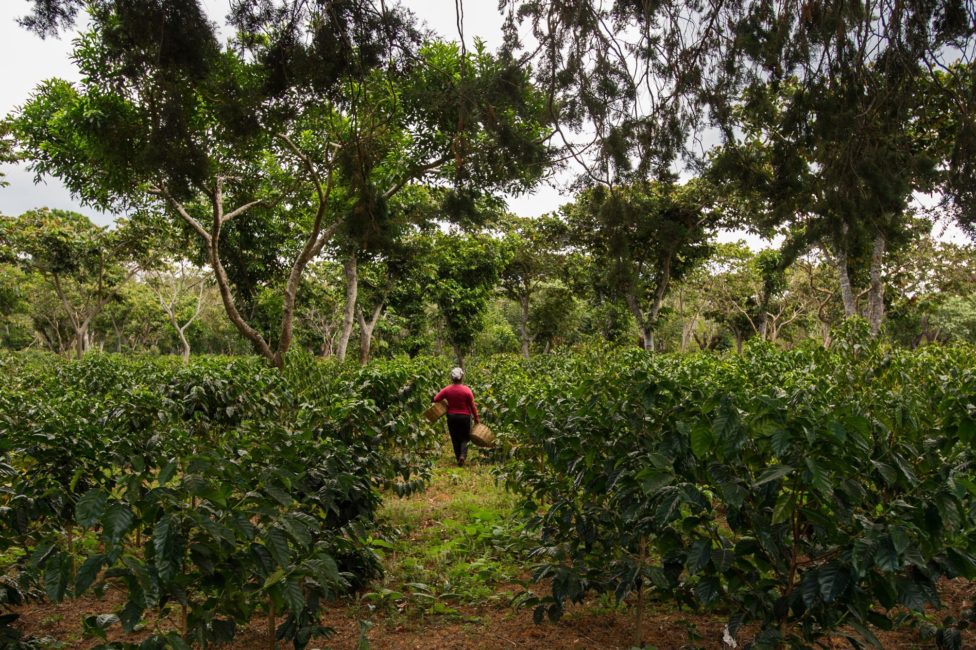Colombia Main Crop Update
Published 18 January 2022
Since we began sourcing there in 2015, coffees from Colombia have quickly become some of our most important offerings, due to their high quality, versatility, and year-round availability.
Because of its mountainous topography, producing regions in Colombia experience highly localised micro-climates, which typically allow for two harvests during a single calendar year – the Main Crop, which runs from October to January, and the Fly Crop (or ‘Mitaca’) which runs around six months later, from April to July. We recently spoke to our exporting partner and good friend, Pedro Echavarría of Pergamino, to check in on the progress of the ongoing Main Crop harvest and gain a better understanding of current conditions on the ground.
It’s fair to say that 2021 was not an easy one for Colombian coffee growers. While this is largely due to the long-term social effects caused by the pandemic – which resulted in nationwide protests and strikes during the first half of the year – it was also the result of unseasonable weather that affected harvest and processing.
We were relieved to see the political situation improve over the course of the year, as Covid cases began to decrease towards the end of 2021. However, like the rest of the world, Colombia has been struck hard by Omicron in early 2022, and case numbers have begun to steadily climb again. When it comes to the production of coffee, Colombian farmers are unlikely to see much improvement in 2022, as excessive rains and the worldwide shortage of fertilisers have heavily affected current and future yields. This, coupled with the great volatility in the price of green coffee, has contributed to ongoing uncertainty and concern for our export partners.
Although rain is usually seen as a benefit to farmers, last year’s incessant rainfall during the season’s flowering period has led to a significant drop in yield from this current harvest. Since coffee trees did not get the sunny, dry weather needed to flower abundantly a year ago, they were unable to produce much cherry this year. As Pedro explained, “Usually, the flowering for the Main Crop occurs after a dry period in January and February, but this was very brief in 2021. Instead, we had constant rains throughout the year, starting December 2020. As of now we have had up to 70% more rain than our historical average.”
These conditions have led to a 30% loss in volume across Pergamino’s Santa Barbara farms in the state of Antioquia, with similar losses experienced across the Urrao and Caicedo producing regions, also in Antioquia; Inza, in the state of Cauca; La Plata, in the state of Huila; and the southern half of the state of Tolima. The situation in Urrao is of particular concern, as truck hijackings and extortions have also been on the rise, posing a threat to the safety of Pergamino’s team on the ground. This substantial drop in production took Pedro and his team by surprise, “We knew the weather was bad, but we didn’t know how much this would impact volumes until we started picking.”
While the decrease in yields for this season is troubling enough, the cost of production has also shot up due to the ongoing shortages in the supply of fertilisers. The shortage is a direct result of two factors: Firstly, urea, the most widely used nitrogen-based fertiliser in the world, is not being produced at a fast enough rate, due to Covid restrictions. Secondly, imports of the chemical have slowed down to a trickle, due to the international shipping crisis. Basic supply and demand dictates that what little fertiliser is available has become prohibitively expensive for the average Colombian coffee grower. Not only does this affect the cost of production in the short-term, but it guarantees prices will remain high for the foreseeable future, as constraints are likely to continue throughout the year. With this year’s rain patterns closely mimicking last year’s, yields are unlikely to bounce back during the 2022 Fly Crop to ameliorate the situation.
A direct outcome of decreased production across the country is that buyers of commercial-grade coffee have struggled to fulfil contracts and have been forced to pay prices that are much higher than usual – close to specialty premiums, in fact. This extra revenue is great news for producers, but the volatility of the market threatens the long-term sustainability of sourcing and supply. Pedro tells us the price of coffee in the local market has nearly doubled in the last couple of months, in direct relation to the rising C price. However, as he points out, with prices this high, it’s become harder for his team to demand the same focus on quality from producers as they have in previous years. Since the base price of cherry is already so high, there’s little incentive for producers to do all the labour associated with producing specialty grade coffee.
Since plenty of large commercial-grade buyers still have outstanding contracts, industry experts believe prices will continue to go up, and many farmers are choosing to hold on to their coffee until the market price peaks. As a result, sourcing high quality coffee has become even more speculative than in previous years.
On the one hand, this is an understandable move by the producer – why should they commit to sell at a fixed price when there is still a chance that the market will go even higher? And though this introduces challenges for Pergamino in securing coffee, they are accepting of the situation and conscious that the long-term benefits of higher prices outweigh the initial costs.
On the other hand, the speculative nature of the market leaves the possibility for a sudden crash in the price of coffee. To mitigate this risk, the local market has all but stopped relying on forward purchases and contracts (placing further pressure on large, commercial-grade buyers), and most coffee is only being sold once it is available as a ‘spot’ offering. This move has left Pergamino, and other specialty buyers, short on stock, since they were unable to secure coffee early in the season (like they usually would), because a price swing in the wrong direction could have resulted in considerable financial losses.
Inevitably, the general feeling on the ground is one of great uncertainty. As Pedro states, “Everybody is happy about the high local prices, but at the same time volume is 30% below average and the cost of fertilisers is three times that of last year’s.” The current unpredictability of logistics isn’t helping either, as he goes on to say “… we have weeks where we easily get bookings and port scheduling, and other weeks it is slow and a drag.”
Here in Australia, these factors have resulted in an increase in prices and a lack of availability of Main Crop coffees until June of 2022. The tenuous situation in Urrao, one of our favourite producing regions, means we are unlikely to see coffee lots out of the region. We are committed to supporting Pergamino nonetheless, just as they are committed to finding us the highest-quality coffees available, sourced with practices that guarantee producers are adequately compensated for their efforts. We have no doubt that the samples they will select for us to evaluate will be outstanding, but this will come at a higher cost than in previous years. Shipping delays are also to be expected, and forward-planning will be key in ensuring you have a sufficient supply of coffee – particularly in reference to all-important blending lines. We are expecting to start tasting offers in March or April, and we’ll be sharing more information and samples as we progress through the purchasing season.
We currently have a selection of fresh regional blends from the 2021 Fly Crop in stock, with more coffees from the tail-end of that season landing in February. The coffees currently in stock are available to order and tasting incredible, and limited pre-shipment samples are still available for the incoming containers. In planning, we recommend forecasting your usage through to at least June 2022, as we are unlikely to land more coffees between now and then.
We cannot stress how important planning ahead is in this current climate – don’t hesitate to get in touch if you’d like to request samples or book a cupping session where we can also chat about your coffee program!





